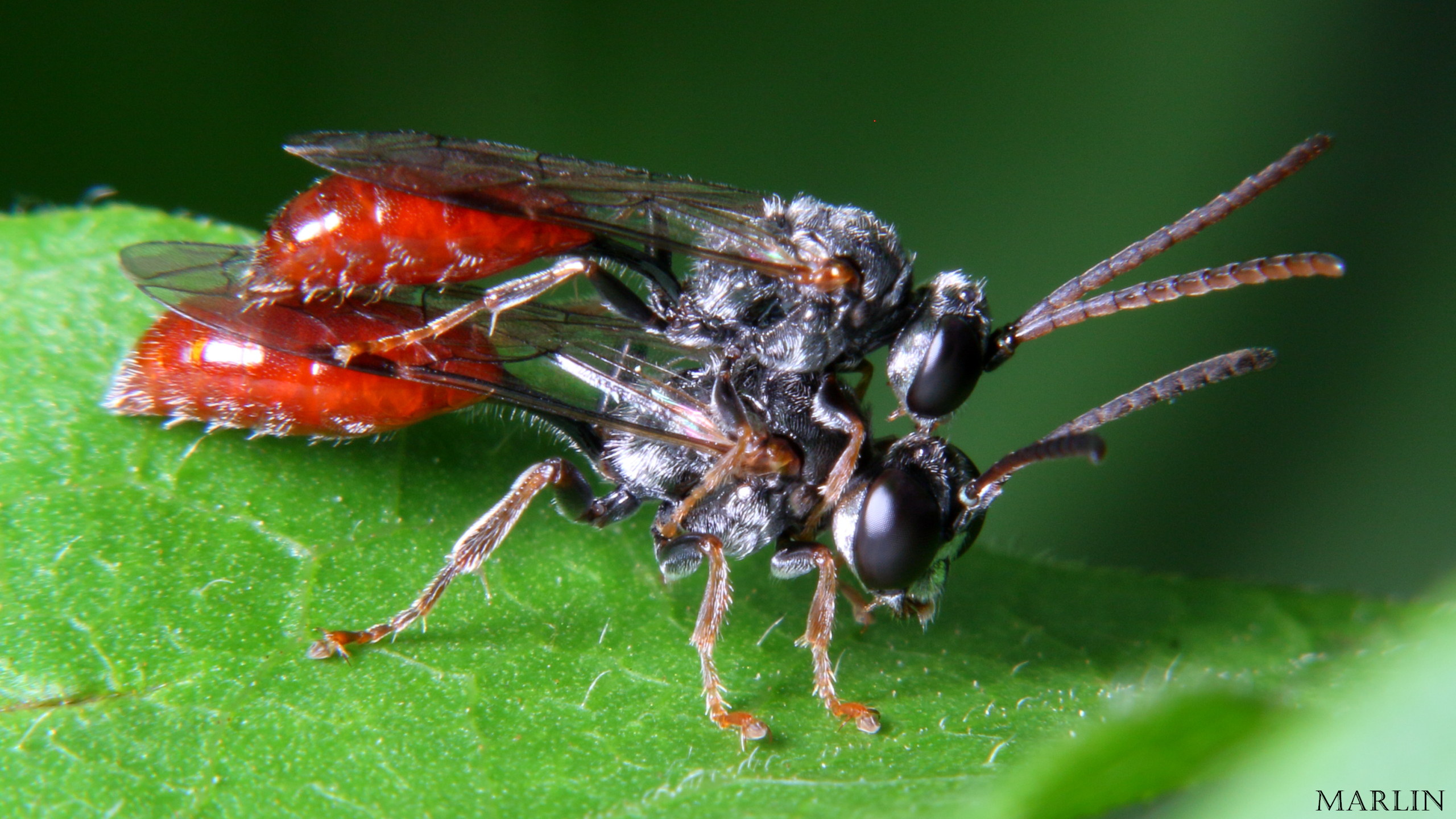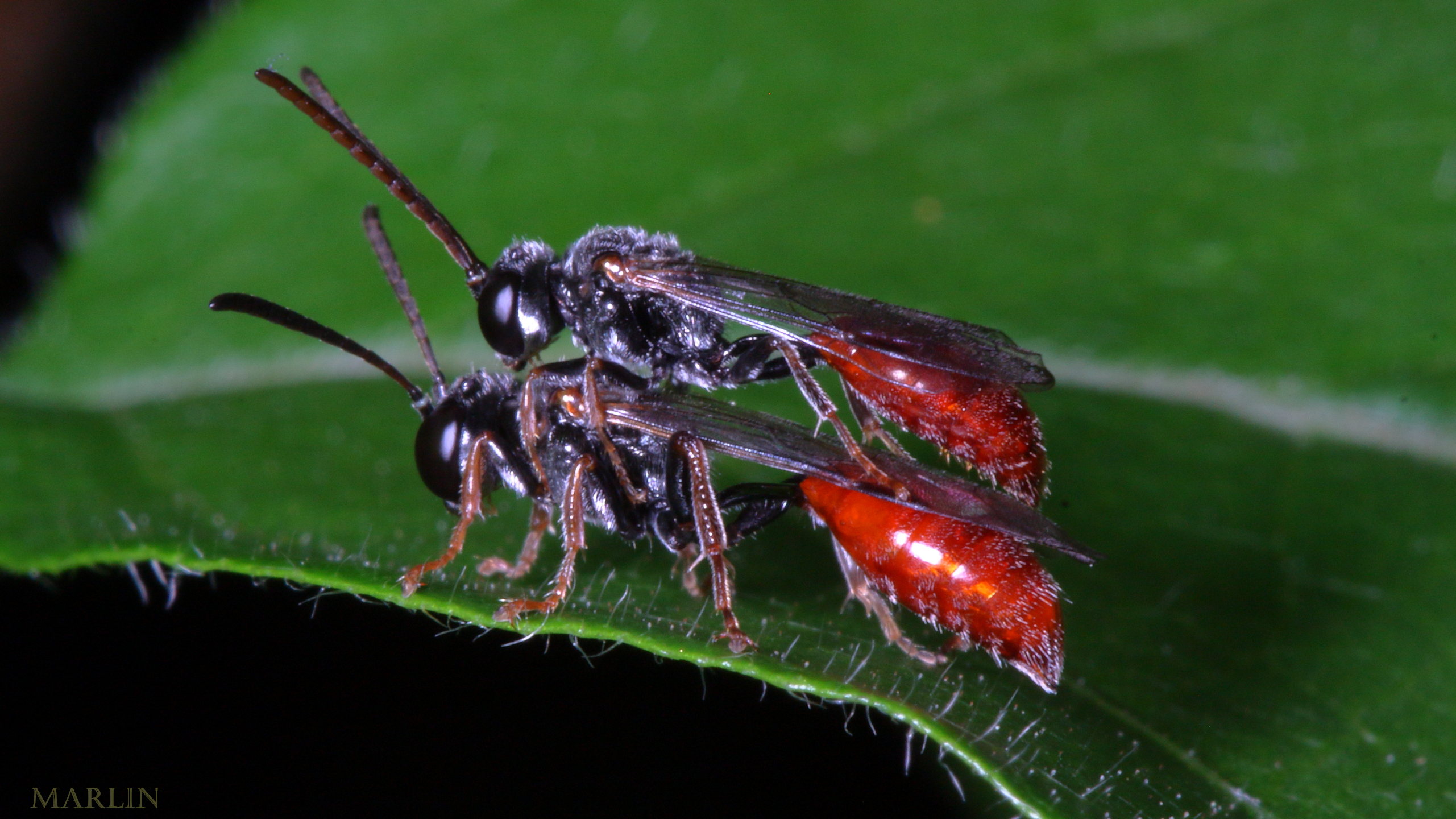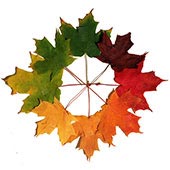Thread-Waisted Wasps – Tribe Psenini
 Live pair of aphid wasps (subfamily Pemphredoninae, tribe Psenini) photographed at Winfield, Illinois. Size – Female = 12mm (on bottom), male = 10mm. This pair eventually tired of me and flew away in tandem. I never got a photograph of them actually mating.
Live pair of aphid wasps (subfamily Pemphredoninae, tribe Psenini) photographed at Winfield, Illinois. Size – Female = 12mm (on bottom), male = 10mm. This pair eventually tired of me and flew away in tandem. I never got a photograph of them actually mating.
 Subfamily Pemphredoninae consists of about 1050 species in 40 genera worldwide [1]. The Pemphredonines are small to tiny sphecidae, many of which display one or more of the following distinctive characteristics: A stemlike sternal petiole (the proverbial “wasp-waist”), a cuboidal head (many wasps in the parent family Crabronidae are commonly called “square-headed” wasps), and a disproportionate enlargement of the forewing stigma [2].
Subfamily Pemphredoninae consists of about 1050 species in 40 genera worldwide [1]. The Pemphredonines are small to tiny sphecidae, many of which display one or more of the following distinctive characteristics: A stemlike sternal petiole (the proverbial “wasp-waist”), a cuboidal head (many wasps in the parent family Crabronidae are commonly called “square-headed” wasps), and a disproportionate enlargement of the forewing stigma [2].
Pemphredonines are often abundant, but being rather small and adept at hiding (the pair pictured here were hidden underneath a leaflet when I spied and uncovered them). I don’t see many of these, and I consider myself fortunate to have encountered a cooperative couple; it’s usually futile to chase one of these wasps while they are nectaring or hunting, they just won’t hang around long.
Female pemphredonines provision their nests with Homoptera (principally leafhoppers), or in a few cases, Thysanoptera (thrips) or Collembola (springtails).
References
- BugGuide.net, “Subfamily Pemphredoninae – Aphid Wasps“
- Bugguide.net, “Psenini Wasps Mated“
- Richard Mitchell Bohart, Arnold S. Menke, “Sphecid Wasps of the World: A Generic Revision“
Order Hymenoptera – Ants, Bees, Wasps and Sawflies
Bees & Wasps Index | Parasitica | Aculeata | Symphyta

